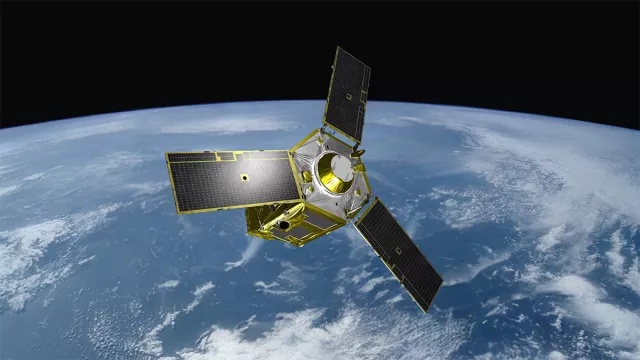Launched in December 2011 and 2012, Pleiades is a constellation of two high-resolution satellites capable of acquiring colour imagery at a resolution of 70 centimetres—resampled to 50 centimetres on the ground—of any point on the globe in under 24 hours for civil and military users.
Key information
| Mission | Earth observation and acquisition of very-high-resolution Earth imagery |
|---|---|
| Domain | Defence, Earth observation |
| Launch date | First satellite launched 17 December 2011 |
| Partners | Airbus Defence & Space (ex-EADS Astrium Satellites), Thales Alenia Space |
| Where | 694-km Sun-synchronous low Earth orbit |
| Lifetime | 17 years |
| Status | In operation |
Key figures
- 2 satellites in constellation
- 180° phasing on same orbit
- 980 kg: mass of each satellite
- 600 images acquired by each satellite every day
Key milestones
- 31 December 2028: Scheduled end of mission of Pleiades-1A and Pleiades-1B
- 11 December 2012: First images from Pleiades-1B
- 2 December 2012: Pleiades-1B launched by Soyuz
- January 2012: First images from Pleiades-1A
- 17 December 2011: Pleiades-1A launched by Soyuz
- November 2009: Thales Alenia Space delivers flight models to EADS Astrium for integration
- April 2002: Project definition review
Project in brief
Pleiades has been observing and mapping Earth’s surface at a resolution of just 70 centimetres every day since December 2011.
The Pleiades system complements the observing capabilities of the SPOT satellites, which have a wider field of view than Pleiades but lower spatial resolution. Pleiades’ key asset is an extremely sensitive optical instrument that reduces the exposure time needed for each image, while the satellites’ great agility enables tasking conflicts to be kept to a minimum and offers multiple acquisition modes (stereo, mosaic, corridor, etc.). Each satellite thus has the ability to acquire up to 500 images a day.
Imagery acquired by the two Pleiades satellites are collected at user centres in Creil for the French armed forces and in Toulouse for Airbus Defence & Space, the exclusive world distributor for civil users.
CNES’s role
As prime contractor for the Pleiades system, CNES contracted with Airbus Defence & Space to build the satellites and with Thales Alenia Space for the optical instrument.
Pleiades was initially developed as part of the French-Italian ORFEO programme (Optical and Radar Federated Earth Observation), of which it is the optical component and COSMO-Skymed (Italy) the radar component.
Contacts
Project Leader
Nathalie Brancherie
E-mail: nathalie.brancherie at cnes.fr
Continental Biosphere subject matter expert
Philippe Maisongrande
E-mail: philippe.maisongrande at cnes.fr


